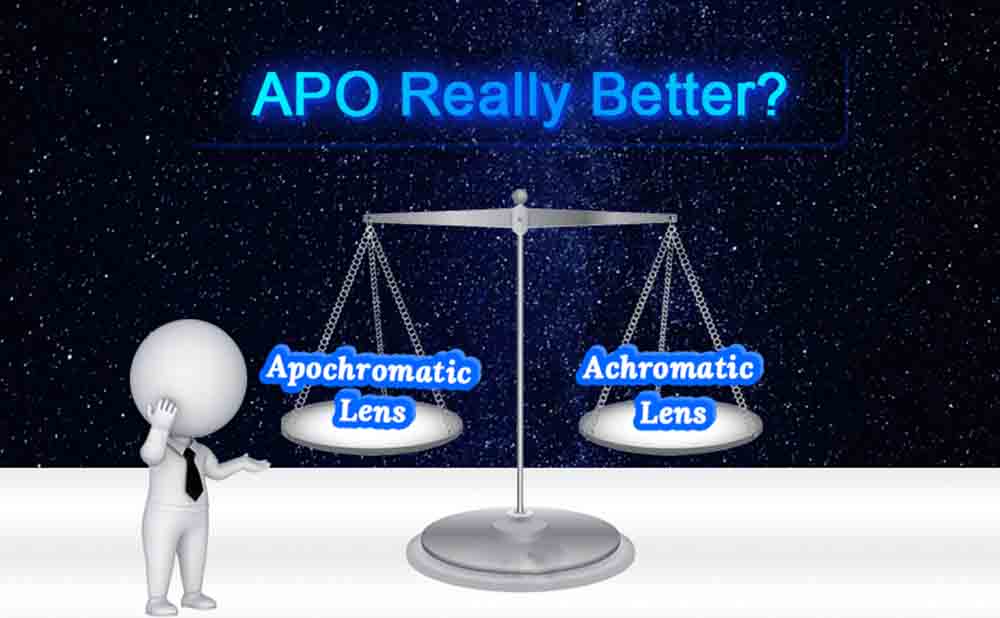Difference Between APO & Achromatic Lens Under Diffraction Ring

Difference Between APO & Achromatic Lens Under Diffraction Ring
What is Diffraction Ring?

Picture from Internet
In optics, the Airy disk (or Airy disc) and Airy pattern are descriptions of the best-focused spot of light that a perfect lens with a circular aperture can make, limited by the diffraction of light. The Airy disk is of importance in physics, optics, and astronomy.
What is the difference between three-chip APO and achromatic lens (general elimination) under diffraction ring ?
This is hardly noticeable at low and medium magnifications. Let's go to a high magnification, such as 500 times, and see what is the difference between their diffraction rings under the star point (the following conclusion comes from the 125APO and 120 refraction in my hand):
Achromatic lens: In fact, the most bright and discernible focal point is a little bit inward of the focal point, that is, the diffraction ring is red-purple. At this time, the diffraction ring is very clear, but outside the first diffraction ring, there will be a very large one. Circular light blue or lilac light spot, the radius of this spot is 2 to 3 times the radius of the first diffraction ring. This means that a large amount of light energy is lost.
APO: The brightest and recognizable area at the focal point is still a little bit inward, but the diffraction ring is still white at this time! Outside the Airy spot, there are still dim spots. I don’t know if this is caused by the quality of the mirror or the error brought in by the star point, but this spot can converge to only 1.5 times the radius of the first diffraction ring. This means that the loss of light energy is small.
The above example can explain that when I look at Jupiter with the general elimination (achromatic lens telescope), why the Jupiter pattern will be reddish, and there will be a layer of purple mist on the periphery. When adjust the reddishness to white, the pattern becomes blurred.
The above example can also explain why APO is sharper than general elimination, because he does not have a lot of light energy loss.
However, the three-piece structure of APO also brings the problem of loss of light energy through the lens. Therefore, in fact, the two have gone away. On the one hand, APO brings energy concentration, and on the other hand, multiple lenses cause light energy loss. APO of general quality may not be able to outperform good general consumption visually. (APO in general quality may not better than Achromatic lens)
------------------------------------------------------------------------------------------Learn from Chinese Forum
Some people ask if the SV503 is APO? I also want to ask one question: Do you only buy APO, not buy a Quality Doublet Achromatic?
Svbony SV503 ED Doublet telescope isn’t an APO, only designed with one SPL-51 ED Glass and one Lanthanide glass. Both are very very good glasses. On the one hand, extra low-dispersion lens is used to increase light energy efficiency, and on the other hand, multi-layer coating technology is used to minimize the loss of light energy. In this way, SV503 Telescope will be as better as the normal quality APO, Even better than some general quality APO. As many customers known, quality is the best service for Svbony fans.
Will keep update the photographer testing results of the SV503 80 ED Telescope. Hope this will help you find the best scope for yourself.








